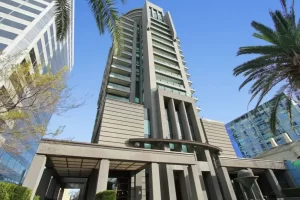The number of available rental apartments across inner Melbourne has plummeted by 76 per cent since February and is down 56 per cent in inner Sydney, amid rising demand from tenants seeking affordable housing options, new data from CoreLogic shows.
In the past nine months, inner Melbourne’s rental stock had dropped from 7890 in February to just 1920 by the end of October. Since peaking in November last year, unit rental listings have been trending lower and are now 53 per cent below pre-pandemic level.
Similarly, inner Sydney rental listings had slumped from 4521 to just 1970 during the same period. Stock levels have now fallen 57 per cent lower than the March 2020 level since listings peaked in June.
CoreLogic research director Tim Lawless said rental affordability played a part, as well as the growing demand from tenants returning to the capitals.
“One reason for the increased interest in inner city unit rentals is likely to be the price difference,” said Mr Lawless.
“Through COVID, renting an inner-city apartment has become more affordable in raw dollar terms and in relativity to renting a house.”
Since the onset of the pandemic, capital city house rents surged 10.1 per cent, while unit rents stayed 0.3 per cent below pre-COVID-19 levels.
The average rent on an inner-city unit in Melbourne has fallen by $91 a week since March last year, or 18.1 per cent below the pre-COVID high.
In Sydney, renting an inner-city unit is now $21 a week cheaper than it was since March last year.
Mr Lawless said rental demand for inner-city tenancies was likely to increase further as the CBDs and inner suburbs become more vibrant as restrictions ease and workers gradually return to work.
“Once international borders open more fully, it’s likely demand for inner city unit accommodation will rise more substantially, especially as foreign students and international visitor numbers start to lift,” he said.
The growing demand for apartment rentals pushed vacancies lower across the central business districts, according to SQM Research.
The vacancy rate in the Sydney CBD has dropped by 70 basis points to 7.5 per cent in October, it fell by 40 basis points to 8 per cent in Melbourne, and was down by 20 basis points to 8.4 per cent in Brisbane.
The large drop in the share of empty rental apartments dragged the national vacancy rate down to a 10-year low of 1.6 per cent over the month.
“I do expect vacancy rates to tighten further from here as more people move back to the inner cities” said Louis Christopher, SQM Research managing director.
“I think there’s an imminent turnaround in the inner city rental markets.”
The good news for landlords was that rents were now rising across each of the inner city unit precincts of Australia, Mr Lawless said.
“After recording weaker conditions since April last year, the unit rental sector has clealy strengthened,” he said.
“Since August, there has been very little difference between the change in house and unit rents across the capital cities.
“Even Melbourne inner city unit rents are now 2.4 per cent higher over the three months ending October and 1.1 per cent higher over the 12-month period.”
This article is from Australian Financial Review, please click the following link for the original article: https://www.afr.com/property/residential/melbourne-cbd-rental-apartment-stock-plunges-76pc-20211115-p598y2




